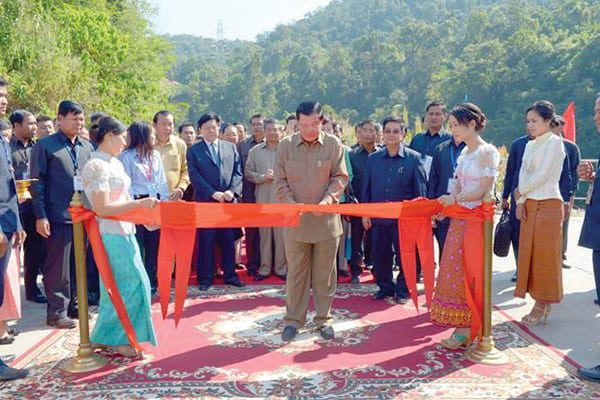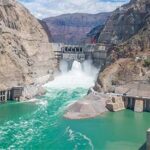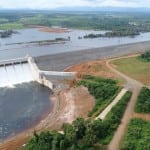The 338-MW Russey Chrum Krom hydropower plant in southwestern Koh Kong province, Cambodia, was inaugurated on Jan. 12. The Chinese-built project is the largest hydropower station located in the Southeast Asian country of more that 15 million people.
The dam was constructed by China Huadian Corp. at a cost of about $500 million under a 35-year build-operate-transfer contract with the Cambodian government. The first five years of the contract were designed to accommodate construction, which officially began on Apr. 1, 2010. It is the largest investment China Huadian has made in Cambodia.
The hydropower facility comprises an upper and a lower station. The upper-station dam was completed on Dec. 28, 2010. The lower portion was completed in June 2013 and began to impound water on Dec. 13, 2013. The upper dam’s generation capacity is 206 MW, while the lower dam contributes 132 MW to the total.
Cambodia is in desperate need of reliable power. According to The World Bank, electricity cost and access is a key constraint to further growth of the country’s manufacturing sector. Even so, Cambodia’s average annual growth rate was 7.7% during the past two decades, making it the sixth-fastest growing country in the world during the period.
The Cambodian Ministry of Industry, Mining, and Energy (MIME), forecasts power demand will more than double by 2020. While that sounds daunting, with a current nationwide capacity of only 1,072 MW, adding a plant the size of Russey Chrum Krom goes a long way toward meeting new demand requirements.
MIME’s electricity supply development plan depends upon the construction of four more hydropower projects (totaling 1,326 MW) and three coal-fired power plants (totaling 1,235 MW) to accommodate growth to 2020 and beyond. While some estimates have pegged Cambodia’s theoretical hydropower potential to be greater than 10,000 MW, prior to 2002 virtually none of it had been developed.
Since 2002, five hydropower stations have been added, and a sixth is expected to come online soon. The operational sites are: Kirirom 1 (12 MW), Kirirom 3 (18 MW), Stung Atai (120 MW), Kamchay (194.1 MW), and Russey Chrum Krom (338 MW). The 246-MW Stung Tatai station is said to be complete and will be put into service later this year.
In addition to generation from the hydropower plants, Cambodia imports power from Vietnam (170 MW) and Thailand (120 MW). It also gets power from two 50-MW coal-fired units at the Sihanoukville project, which came online in January 2014.
But just adding capacity is not enough. Cambodia currently lacks the transmission and distribution infrastructure to get the electricity where it needs to go. Although the Russey Chrum Krom hydropower plant is technically a 338-MW facility, The Cambodia Daily reports that its current output is only about 5% due to its inability to transmit the power outside of the provincial town.
In time, Cambodian Prime Minister Hun Sen—who was on hand for the inauguration ceremony (Figure 1)—says the transmission network will be in place to distribute the dam’s power nationally, but that could take years.
—Aaron Larson











